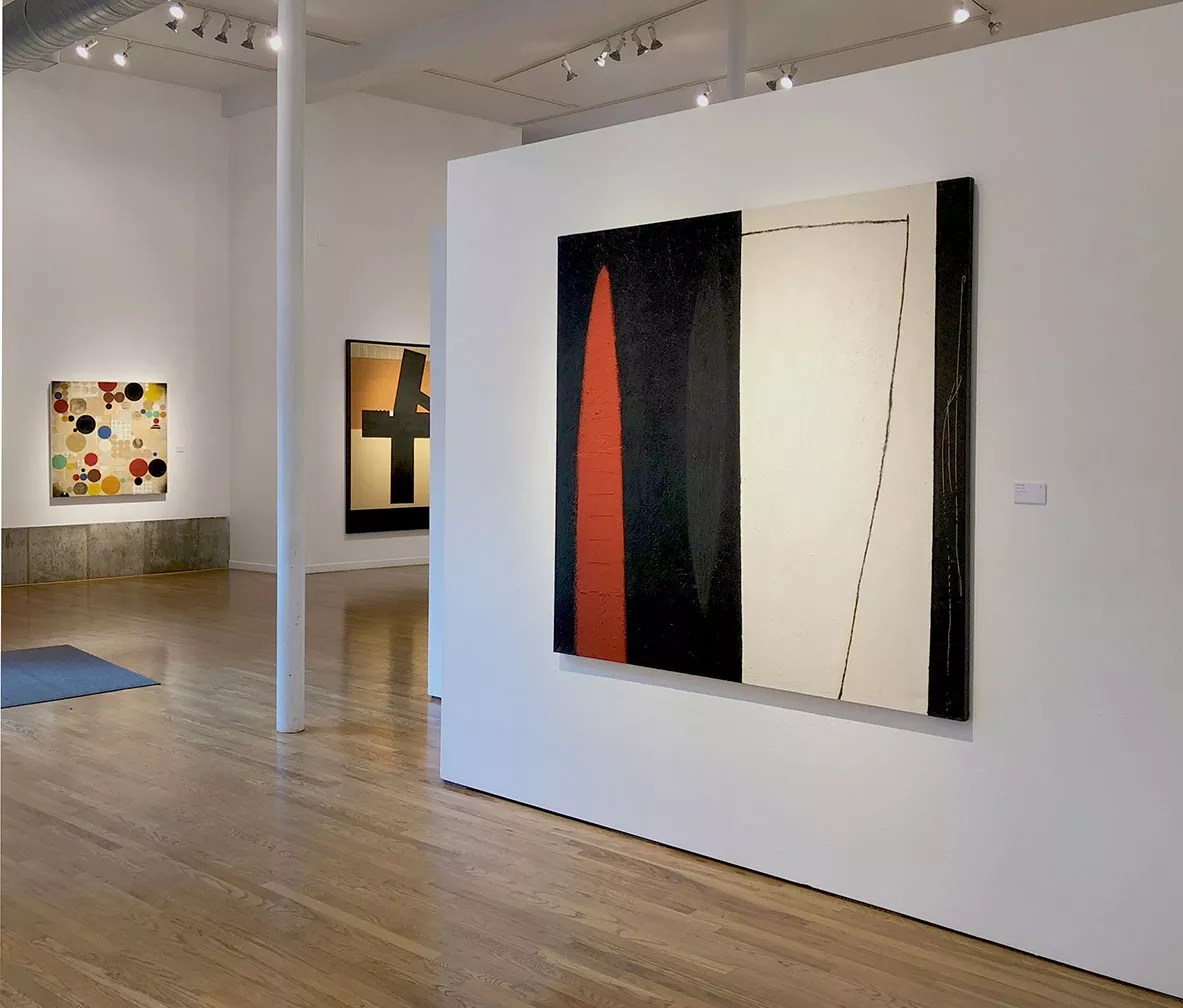
Nick Ryan, William Havu Gallery

Audio By Carbonatix
This fall’s exhibition calendar is full of noteworthy Colorado artists who are the subject of major solos or retrospectives: Linda Fleming, Virginia Maitland, Robert Mangold, Elizabeth Yanish Shwayder, Frank Sampson, Paul Gillis, Scott Chamberlin and, coming up, Margaret Neumann. Over the next month or two, you could visit galleries and art centers in the area and conduct your own seminar in the history of contemporary art in the state. The wonderful Emilio Lobato: Retro-Spectacle: 25 Years of Painting & Prints, at the William Havu Gallery, definitely belongs on the list.
The gallery itself deserves a shout-out. The Lobato exhibit is being presented as a celebration of Havu’s twentieth anniversary in its current location, a custom-designed, neo-modernist building by the artistically distinguished firm of Humphries Poli Architects. A built-from-the-ground-up gallery is unusual anywhere, especially in Denver (the only other one is Space Gallery), and not only has owner Bill Havu kept this one going for two decades, but he recently marked his 45th year in the art business in Colorado.
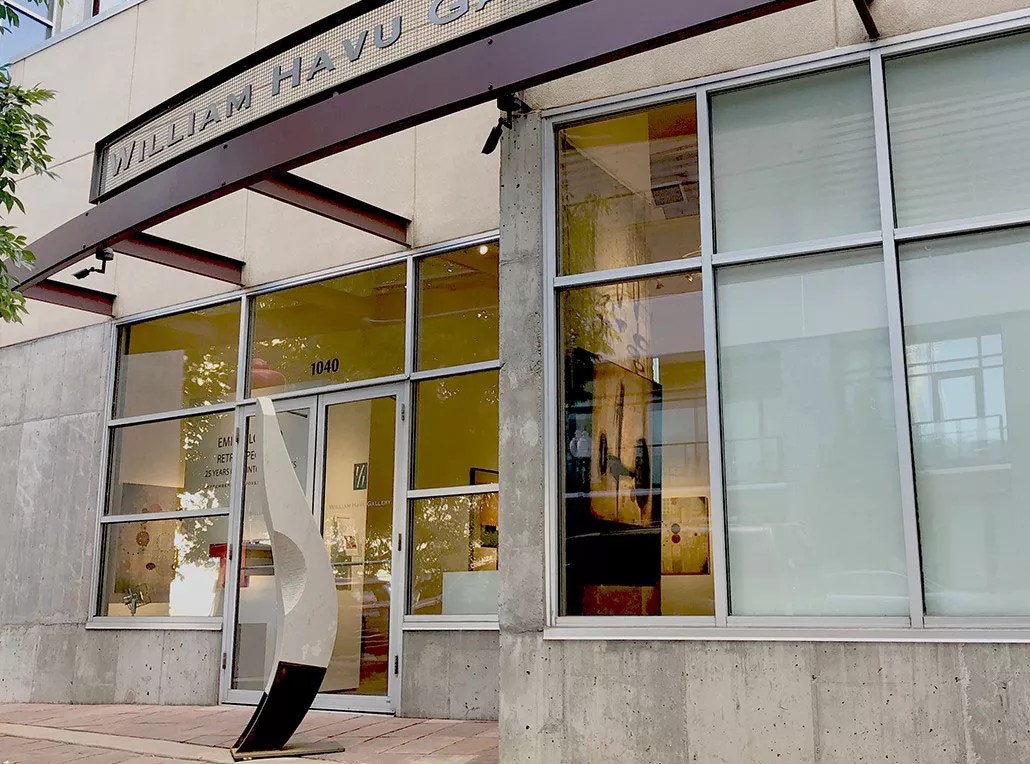
Exterior of the William Havu Gallery, designed by Humphries Poli Architects.
Courtesy of William Havu Gallery
Havu was something of a ski bum and, he says, “fresh out of opportunities” in 1968 when he started working at various low-level jobs in Aspen. In the fall of 1973, he took over the machinery and inventory of a failed frame shop and opened Galley Frame Shop of Aspen; a year and a half later, he moved the operation a couple of blocks away and opened in the new location as Gallery 400. Havu was soon approached by New York printer HMK Fine Art to represent the company, a publisher of limited-edition silkscreens, lithographs and etchings, which he did from 1977 until 1982, when HMK closed. The company oversaw a who’s-who roster of contemporary artists, and Havu placed their prints in galleries throughout the Rocky Mountain region.
Havu moved to Denver the year before HMK folded and opened his own fine-print publisher, Art Group Partners, in 1982, commissioning local artists to make monoprints. AGP had a showroom at 17th and Park avenues, on the second floor of the building where the Robischon Gallery was then located. In 1986, Havu moved to what would much later become RiNo, redubbing his showroom William Havu Fine Art. Scandals in the limited-edition print world, in which works were easily forged, soon led to the ascendency of one-off prints. In 1991 he opened 1/1, with the name referring to the way a monoprint is typically marked. Havu specialized in the form.
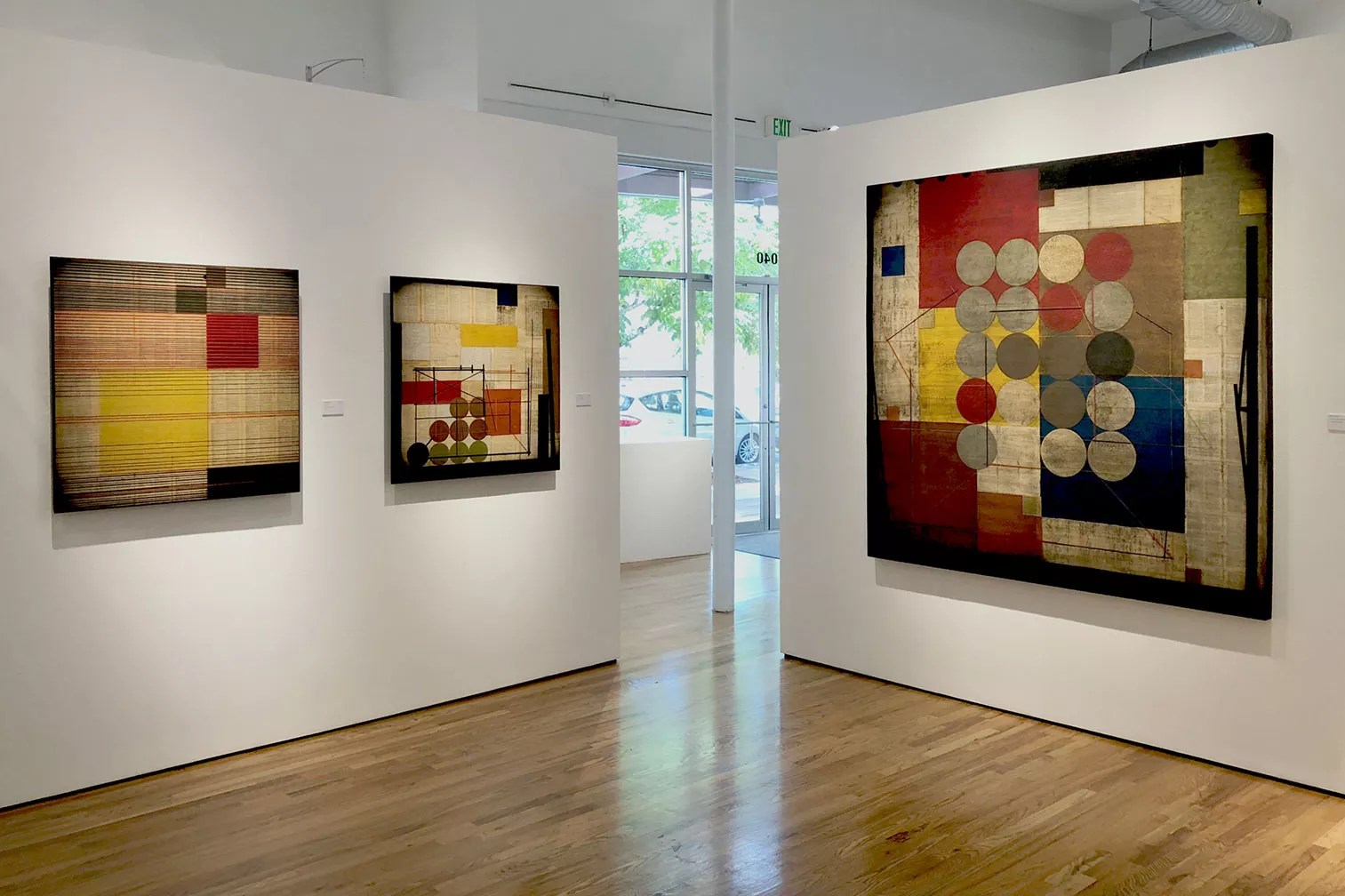
“Peru” (from left), “Lugar/Place” and “Tratando de Recordar/Trying to Remember,” by Emilio Lobato, oil and collage on panel.
Nick Ryan, William Havu Gallery
I first met Havu at 1/1, near the corner of 17th and Wazee streets, in what was arguably the city’s first art district. Robischon had already moved to its current location across the street, and other significant though now long-gone galleries on the block included Hassel-Haeseler, Payton-Rule and Sandy Carson, as well as the first location of Metro State’s Center for Visual Art. When Coors Field was completed in 1995, though, nearby rents soared (Havu’s quintupled), driving out most of the area’s artist-studios and galleries, including 1/1.
LoDo had been pretty rundown when Havu moved there; riding his bike through an even more neglected area that today is the Golden Triangle, he happened on a sign announcing a proposed development, Grand Cherokee Lofts, that was to include a mid-rise, a row of townhouses and a freestanding retail component.
Working with architect Joe Poli, Havu oversaw the design of the interior of that component so that it had a large main area with very high ceilings, a mezzanine for the office, a basement for storage and a sculpture garden in the back. The William Havu Gallery opened at 1040 Cherokee Street in September 1998. Its premiere show was Views of Solitude, which included a large sampling of the work of longtime Denver artist Emilio Lobato.
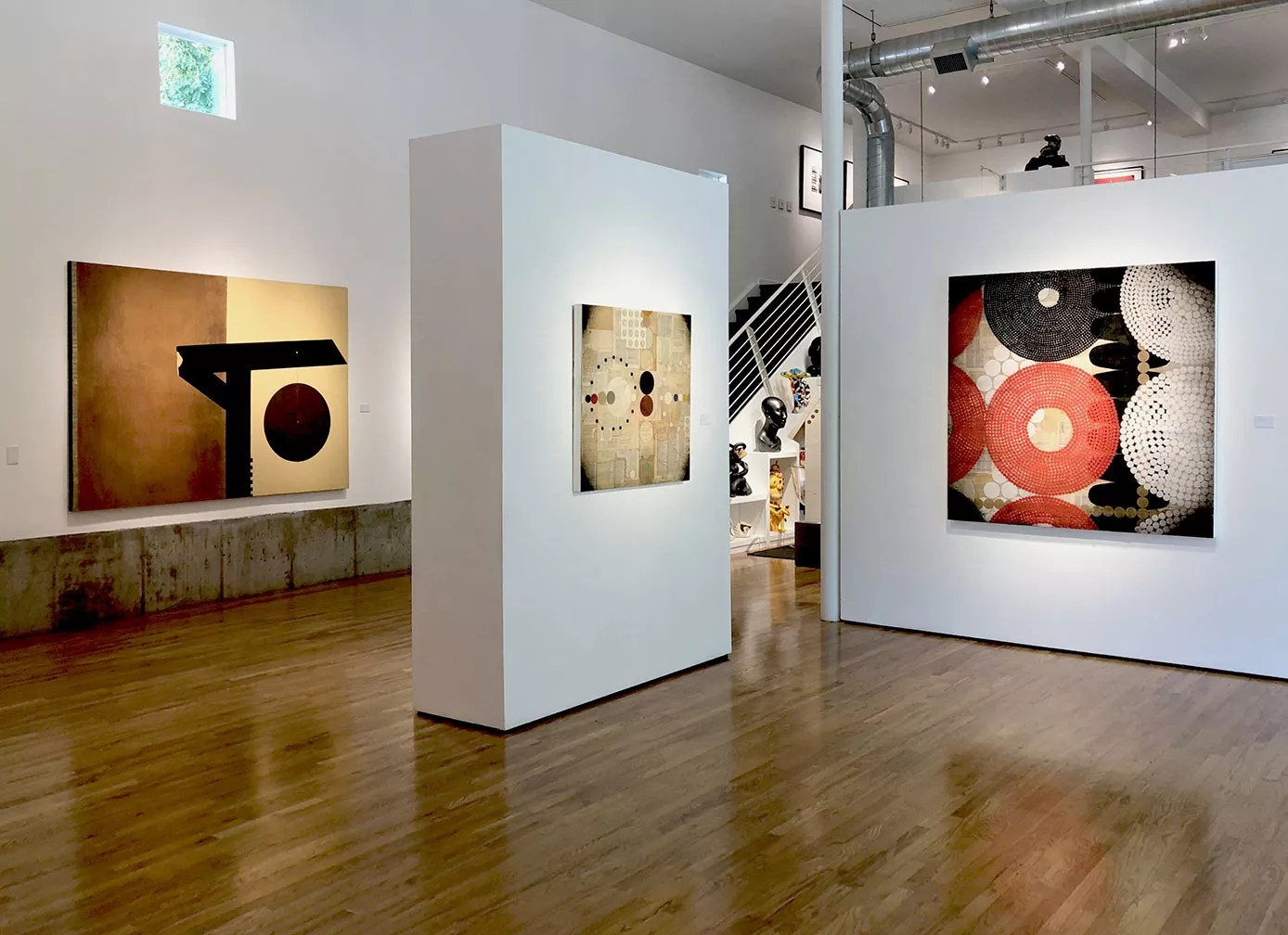
“Miel/Honey” (left), “Talisman” and “Polvo Astral/Stardust,” by Emilio Lobato, oil and collage on panel.
Nick Ryan, William Havu Gallery
The current Lobato show is not actually a retrospective, despite the impression left by the title, Retro-Spectacle. Although pieces span a quarter-century, the works do not account for all the various series that Lobato has created, and the show itself is not arranged in chronological order. Instead, works from the 1990s hang near others that are so new, they’re barely dry. “When we started talking about this show, the idea was to go back twenty years,” explains Lobato, “but I immediately thought I needed to go back further, so we came up with 25 years. And it’s more retrospective-ish than a true retrospective.” Lobato worked with both Havu and gallery administrator Nick Ryan to select what would be included. “At first we tried to arrange things chronologically,” Ryan explains, “but it just didn’t work with the walls.” Instead the show was laid out aesthetically, with pieces placed together simply because they looked good that way.
One of the reasons this approach worked was because of Lobato’s consistency over the course of his career.
“Looking at it all together, I can see that I’ve used the same forms, like circles, over and over,” he notes. While that’s true, every time he goes to the creativity well, he manages to pull up a new formulation of the same idea, orchestrating various geometric shapes – not just circles, but lines, bars, rectangles and squares – to make his atmospheric paintings, collages, prints and constructions. Not everything is dark, but Lobato prefers deep colors, in particular black and red, so a lot of the paintings have a contemplative quality, if not a moodiness. Also noteworthy is his use of book pages and covers as elements in both his collages and constructions.
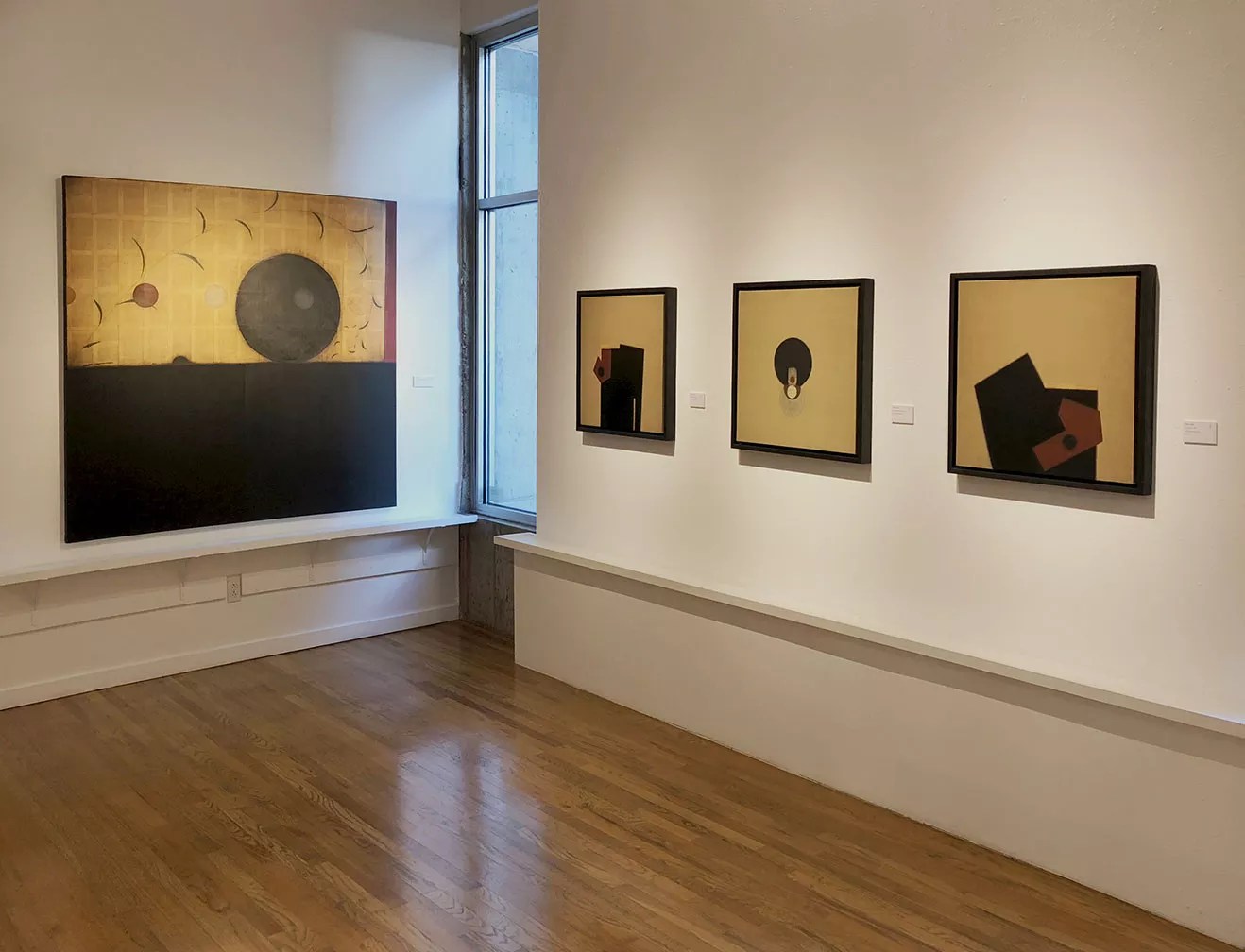
“Renace Una Sombra/Rebirth of a Shadow” (from left), “Hoy II/Today II,” “Algunas Veces/Sometimes” and “Hoy/Today,” by Emilio Lobato, oil and collage on linen.
Nick Ryan, William Havu Gallery
Despite the international look of Lobato’s pieces, they’re completely rooted in the history of Colorado and the state’s art. Those deep, rich palettes bring to mind Spanish Baroque art, or Native American and Hispanic weavings. That’s no accident: Lobato traces his heritage back to the eighteenth century in the San Luis Valley, when it was New Spain, and sees his oeuvre as both representing and being a product of the Latino culture in which he was raised. He’ll sometimes sprinkle his remarks with a Spanish word or two, typically for humorous effect, as when he characterizes his clothing as making him look like “Juan Boy Walton.”
Another way that Lobato’s output reflects Colorado is the influence of earlier modernists in the state, notably Mary Chenoweth, with whom Lobato studied at Colorado College, and one of Chenoweth’s other students, Dale Chisman. “I loved Dale’s work,” he says, “and sometimes I pointedly responded to it in the 1990s.”
When I think about the history of abstraction in Colorado, Lobato is one of the first artists who comes to mind.
His solo celebrating the twenty years that the William Havu Gallery has been in the Golden Triangle demonstrates why everyone else should recognize that, too.
Emilio Lobato: Retro-Spectacle, through November 10, William Havu Gallery, 1040 Cherokee Street, 303-893-2360, williamhavugallery.com.